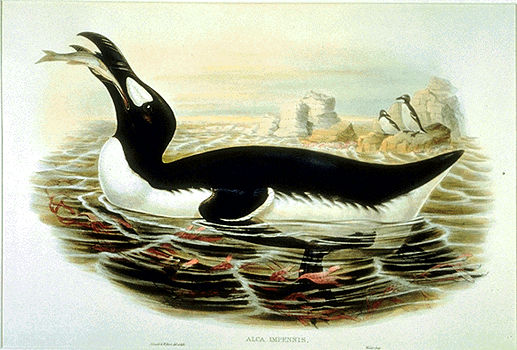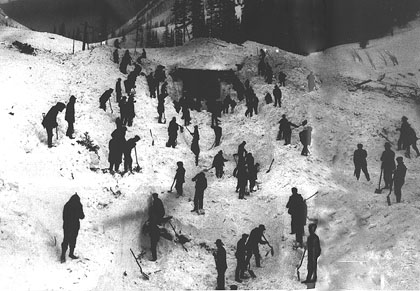Browse "Nature & Geography"
-
Article
Aster
Aster [Lat, "star"], the common name applied mainly to 2 herbaceous genera (Aster and Callistephus) of flowering plants in family Compositae or Asteraceae. Over 250 species of true Aster are known worldwide. Of 52 Aster species native to Canada, about 40 have been brought under cultivation. A.
"https://d2ttikhf7xbzbs.cloudfront.net/media/media/dd0a491b-6357-474b-bdb7-84fb57810e58.jpg" // resources/views/front/categories/view.blade.php
https://d2ttikhf7xbzbs.cloudfront.net/media/media/dd0a491b-6357-474b-bdb7-84fb57810e58.jpg
-
Article
Asteroids Named After Places in Canada
Asteroids were first discovered in 1801. Also known as minor planets, these rocky bodies are believed to have originated as planetesimals (small, solid celestial bodies) during the creation of the solar system, around 4.5 billion years ago. Asteroids orbit the Sun and can be as small as several metres or even as large as hundreds of kilometres in diameter. (See also Planet and Satellite.) There are estimated to be over 1.3 million asteroids in our solar system. Although most will never be seen by the naked eye, many asteroids are assigned names by the Working Group for Small Bodies Nomenclature of the International Astronomical Union (see Astronomy). Several hundred asteroids have been named in connection to Canada. Some of these asteroids describe places, while others honour people or commemorate events. This list includes ten asteroids which are named after places in Canada.
"https://d2ttikhf7xbzbs.cloudfront.net/asteroids/asteroidbelt.jpg" // resources/views/front/categories/view.blade.php
https://d2ttikhf7xbzbs.cloudfront.net/asteroids/asteroidbelt.jpg
-
Article
Atlantic Salmon
Atlantic Salmon (Salmo salar), probably the best-known member of the Salmonidae family, occurs on both sides of the Atlantic Ocean.
"https://d2ttikhf7xbzbs.cloudfront.net/media/media/21de21d6-84a6-4c5f-b034-aa2abcdf0052.jpg" // resources/views/front/categories/view.blade.php
https://d2ttikhf7xbzbs.cloudfront.net/media/media/21de21d6-84a6-4c5f-b034-aa2abcdf0052.jpg
-
Article
Auk
Auks or Alcids refers to birds of the taxonomic group Alcidea. Alcidae is a family within the order Charadriiformes of highly specialized seabirds that contains auks (including the now-extinct great auk), auklets, murres, murrelets, razorbills, dovekies, guillemots and puffins.
"https://d2ttikhf7xbzbs.cloudfront.net/media/media/007ecccd-3ff4-4c68-81c8-4416ce44836c.jpg" // resources/views/front/categories/view.blade.php
https://d2ttikhf7xbzbs.cloudfront.net/media/media/007ecccd-3ff4-4c68-81c8-4416ce44836c.jpg
-
Article
Aulavik National Park
Centred on the wide Thomsen River valley on Banks Island, Aulavik National Park (set aside 1992, 12 200 km2) has an Inuvialuktun name that means "where people travel." The name was suggested by one of the elders of Sachs Harbour, the only community on the island.
"https://d2ttikhf7xbzbs.cloudfront.net/media/media/2303927f-a9a7-4140-b49b-6d17f8e0dbc2.jpg" // resources/views/front/categories/view.blade.php
https://d2ttikhf7xbzbs.cloudfront.net/media/media/2303927f-a9a7-4140-b49b-6d17f8e0dbc2.jpg
-
Article
Auyuittuq National Park
Located on the Cumberland Peninsula of Baffin Island, Nunavut, Auyuittuq National Park (established 2001, 19 089 km2) was Canada's first national park located north of the Arctic Circle. It was first set up as a national park reserve in 1976 and established as a national park through the Nunavut Land Claims Agreement.
"https://d2ttikhf7xbzbs.cloudfront.net/media/media/a4b74f70-c61f-4cfe-a857-0848e3cb40bd.jpg" // resources/views/front/categories/view.blade.php
https://d2ttikhf7xbzbs.cloudfront.net/media/media/a4b74f70-c61f-4cfe-a857-0848e3cb40bd.jpg
-
Article
Avalanche
An avalanche is a rapid, downslope movement of snow, with varying proportions of ice, water, rock, soil and vegetation.
"https://d2ttikhf7xbzbs.cloudfront.net/media/media/c3390251-56fb-47a8-b4c3-37a7a71fd7aa.jpg" // resources/views/front/categories/view.blade.php
https://d2ttikhf7xbzbs.cloudfront.net/media/media/c3390251-56fb-47a8-b4c3-37a7a71fd7aa.jpg
-
Macleans
Avalanche in Quebec
This article was originally published in Maclean’s magazine on January 11, 1999. Partner content is not updated. It was just past 1:30 a.m. on New Year's Day, and most of the residents of the isolated northern Quebec community of Kangiqsualujjuaq were celebrating in a school gym. People exchanged hugs and warm wishes as they listened to the draw for a $1,000 door prize. Then disaster struck.
"https://development.thecanadianencyclopedia.ca/images/tce_placeholder.jpg?v=e9dca980c9bdb3aa11e832e7ea94f5d9" // resources/views/front/categories/view.blade.php
https://development.thecanadianencyclopedia.ca/images/tce_placeholder.jpg?v=e9dca980c9bdb3aa11e832e7ea94f5d9
-
Article
Avocet
The avocet (order Charadriiformes, family Recurvirostridae) is a large, long-legged shorebird about 50 cm long with striking white and black plumage.
"https://development.thecanadianencyclopedia.ca/images/tce_placeholder.jpg?v=e9dca980c9bdb3aa11e832e7ea94f5d9" // resources/views/front/categories/view.blade.php
https://development.thecanadianencyclopedia.ca/images/tce_placeholder.jpg?v=e9dca980c9bdb3aa11e832e7ea94f5d9
-
Article
Back River
Back River, 974 km long, rises in Contwoyto Lake, north of Great Slave Lake, NWT, and flows northeast across the Barren Lands of Nunavut to Chantrey Inlet, south of King William Island.
"https://d2ttikhf7xbzbs.cloudfront.net/media/media/a482d857-2391-4492-83fe-ea3938b7020d.jpg" // resources/views/front/categories/view.blade.php
https://d2ttikhf7xbzbs.cloudfront.net/media/media/a482d857-2391-4492-83fe-ea3938b7020d.jpg
-
Article
Badger
The American badger (Taxidea taxus) is the only North American member of the weasel family specialized for burrowing and capturing prey underground.
"https://development.thecanadianencyclopedia.ca/images/tce_placeholder.jpg?v=e9dca980c9bdb3aa11e832e7ea94f5d9" // resources/views/front/categories/view.blade.php
https://development.thecanadianencyclopedia.ca/images/tce_placeholder.jpg?v=e9dca980c9bdb3aa11e832e7ea94f5d9
-
Article
Banff National Park
Banff National Park (established 1885, 6,641 km2) is Canada's first and most visited National Park.
"https://d2ttikhf7xbzbs.cloudfront.net/media/media/0e212945-05a3-448a-a593-1967884c7fd2.jpg" // resources/views/front/categories/view.blade.php
https://d2ttikhf7xbzbs.cloudfront.net/media/media/0e212945-05a3-448a-a593-1967884c7fd2.jpg
-
Article
Barite
Barite (BaSO4) is a white, colourless, gray, brown, yellow, blue or red mineral found in sedimentary, igneous and metamorphic rocks. It is composed of 65.7% barium oxide (BaO) and 34.3% sulphur trioxide (SO3).
"https://development.thecanadianencyclopedia.ca/images/tce_placeholder.jpg?v=e9dca980c9bdb3aa11e832e7ea94f5d9" // resources/views/front/categories/view.blade.php
https://development.thecanadianencyclopedia.ca/images/tce_placeholder.jpg?v=e9dca980c9bdb3aa11e832e7ea94f5d9
-
"https://d2ttikhf7xbzbs.cloudfront.net/media/media/9756cd06-2abe-4d43-9b31-8bfa0f8cd02c.jpg" // resources/views/front/categories/view.blade.php
https://d2ttikhf7xbzbs.cloudfront.net/media/media/9756cd06-2abe-4d43-9b31-8bfa0f8cd02c.jpg
-
Article
Barnacle
Barnacle, common name for marine invertebrates of subclass Cirripedia, class Crustacea.
"https://development.thecanadianencyclopedia.ca/images/tce_placeholder.jpg?v=e9dca980c9bdb3aa11e832e7ea94f5d9" // resources/views/front/categories/view.blade.php
https://development.thecanadianencyclopedia.ca/images/tce_placeholder.jpg?v=e9dca980c9bdb3aa11e832e7ea94f5d9
